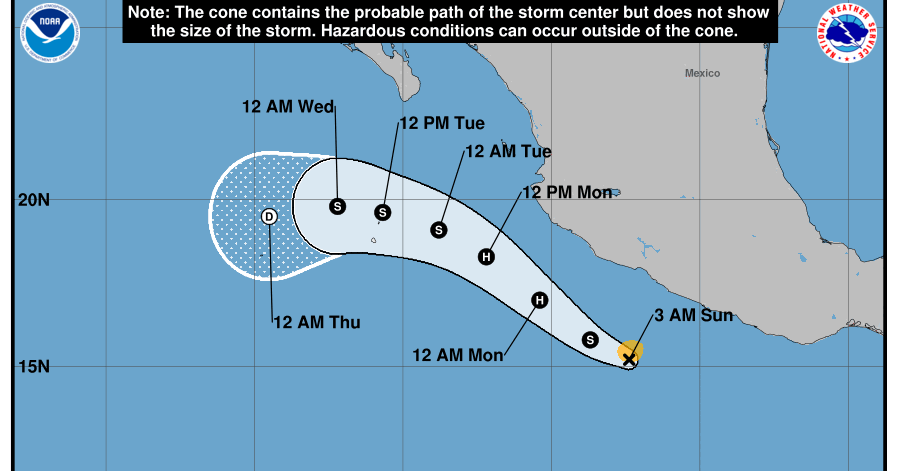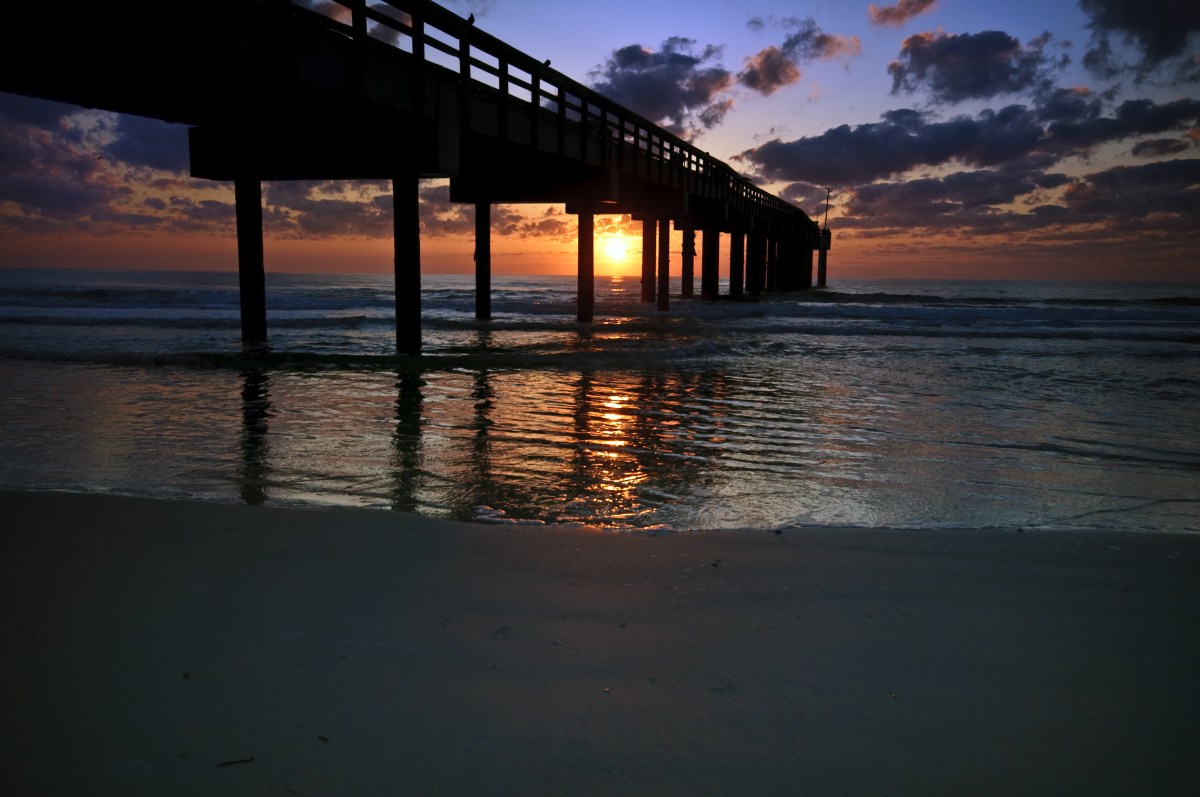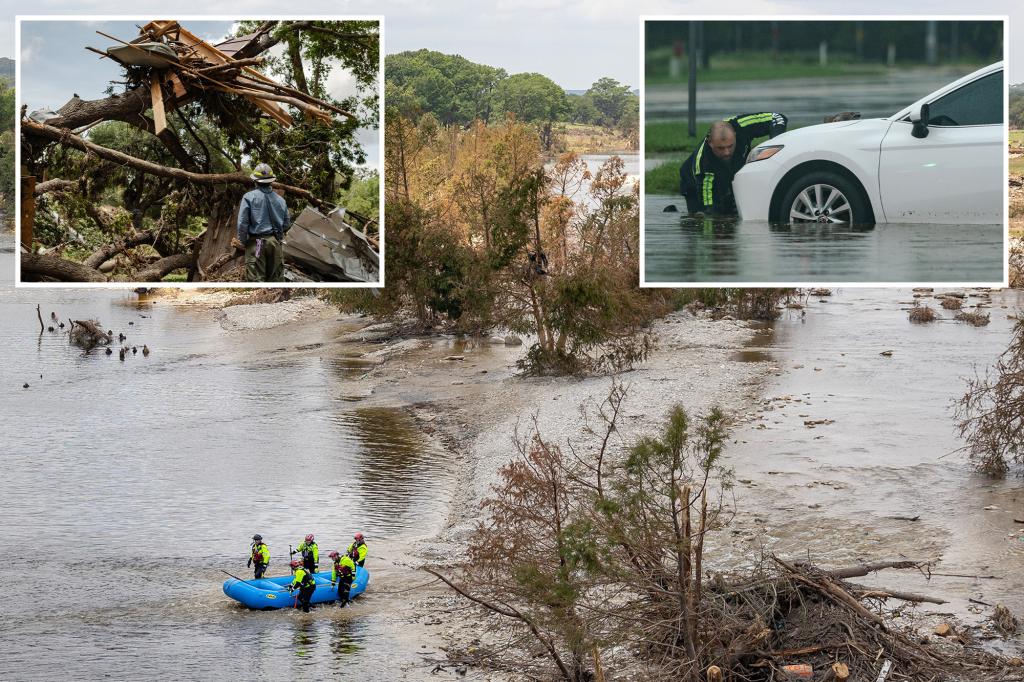Tropical Storm Barbara: A New Weather Threat Emerges Off Mexico’s Coast
Tropical Storm Barbara has formed in the Pacific Ocean, bringing with it potential risks for coastal regions in southwestern Mexico. As the storm develops, meteorologists and experts are closely monitoring its trajectory and the implications it may have on local weather patterns.
Current Status of Tropical Storm Barbara
As of the latest reports, Tropical Storm Barbara is located approximately 200 miles off the southern coast of Mexico. The system has been characterized by sustained winds reaching up to 45 miles per hour, with gusts potentially higher. The National Hurricane Center (NHC) has issued advisories to warn residents and local authorities about the storm’s approach.
Predicted Path and Intensity
Forecast models indicate that Tropical Storm Barbara could strengthen as it continues to move westward. The NHC has highlighted that conditions in the Pacific are conducive to further development, raising concerns that it could reach hurricane strength within the coming days.
- Projected Path: Barbara is expected to maintain a westward course, potentially impacting coastal areas in the states of Guerrero and Oaxaca.
- Intensity Forecast: Meteorologists predict that the storm could become a Category 1 hurricane by the weekend if it continues to strengthen.
Impacts on Coastal Regions
As Tropical Storm Barbara approaches, coastal communities are urged to prepare for possible impacts. These may include:
- Heavy Rainfall: The storm is expected to bring significant rainfall, leading to the potential for flash flooding and landslides in vulnerable areas.
- Strong Winds: Gusty winds could pose risks to structures and trees, particularly in coastal towns.
- High Surf and Rip Currents: Increased wave activity could endanger swimmers and beachgoers along the southwestern coast.
Preparation and Response Measures
In light of the impending storm, local authorities are taking steps to ensure the safety of residents. Emergency management teams are urging people to take the following precautions:
- Gather emergency supplies, including food, water, and medications.
- Secure outdoor objects that could become projectiles in strong winds.
- Stay informed through local news and weather updates.
- Have a communication plan in place with family and friends.
Expert Opinions on Tropical Storm Barbara
Weather experts are divided on the potential impacts of Tropical Storm Barbara. Dr. Maria Sanchez, a meteorologist with the NHC, states, “While the storm is currently moderate, the possibility of intensification is real, and residents should be prepared for any changes in the storm’s strength or path.” Conversely, Dr. John Lee, a climate scientist, emphasizes that local topography and existing weather systems could mitigate the storm’s impact. “The mountainous regions of southwestern Mexico may weaken the storm’s effects as it approaches the shore,” he noted.
Historical Context and Comparisons
To put Tropical Storm Barbara in perspective, it is essential to look at historical data regarding similar storms in the region. In recent years, the Pacific coast of Mexico has experienced a mix of tropical storms and hurricanes, with notable events including:
- Hurricane Patricia (2015): One of the strongest hurricanes ever recorded, causing significant damage in coastal areas.
- Tropical Storm Agatha (2010): Resulted in extensive flooding and landslides across southern Mexico.
The patterns of these past storms highlight the importance of preparedness and the need for ongoing monitoring as Tropical Storm Barbara progresses.
Conclusion
As Tropical Storm Barbara continues to develop in the Pacific, the focus remains on its potential impact on southwestern Mexico. Residents are encouraged to heed warnings from local authorities and stay informed about the storm’s progress. With the hurricane season still underway, preparedness is key to minimizing risks associated with severe weather.
For continuous updates on Tropical Storm Barbara and other weather developments, follow local news outlets and official meteorological advisories.
See more Your Daily Weather



